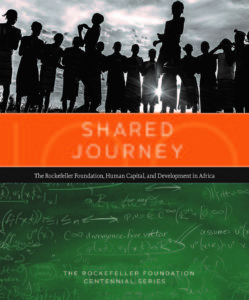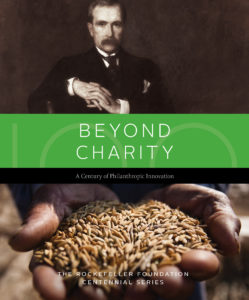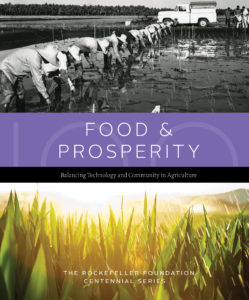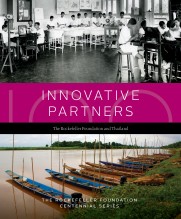Books By Vantage Point Press
All works featured on this page were published by or in affiliation with the Vantage Point Press.
The Question is “Why?”
Stanford M. Adelstein: A Jewish Life in South Dakota
By Eric Steven Zimmer (2019)
From www.questioniswhy.com:
As a Jewish South Dakotan, Stanford M. “Stan” Adelstein has long encountered certain questions: “How did you end up there?” “There are Jews in South Dakota?!” He’s even had to explain where to find South Dakota on the map.
But when Adelstein met David Ben-Gurion in Israel in 1965, the former prime minister asked something else: “The question isn’t ‘where?’,” Ben-Gurion said. “The question is ‘why?’”
Caught off guard, Adelstein responded with what was in his heart: He told Ben-Gurion that carving out a life of purpose on the South Dakota plains was his mission as a Jew. He has spent the years since then living out this response, serving a stunning array of local, national, and international causes.
This book tells Adelstein’s story of family, faith, business, politics, and philanthropy. It provides new perspectives on recent American and world history and on the lives of Jewish people in rural places. And, arriving when many Americans are questioning our democracy’s durability, it inspires all who hope to improve their communities, their country, and the world.
Expanding the Energy Horizon:
A History of Black Hills Corporation Since 1883
By Eric John Abrahamson and Eric Steven Zimmer (2019)
In this updated and expanded edition of 2008’s Improving Life With Energy: The First 125 Years of Black Hills Corporation, Vantage Point historians Eric Abrahamson and Eric Zimmer explore new developments and abiding values from Black Hills Corporation’s story.
Formed in Deadwood, South Dakota, in 1883, the company that would become Black Hills Corporation endured generations of tumult. From an early era defined by entrepreneurial excitement and consolidation by national holding companies in the late 19th and early 20th centuries, through the Great Depression, economic development after World War II, and the deregulation movement of the 1980s and 1990s, Black Hills Corporation learned many valuable lessons. As a new wave of regulation reshaped the energy industry following the collapse of the internet, telecommunications, and energy booms of the 1990s, Black Hills Corporation developed a “back to basics” strategy. By slowly divesting itself of non-core enterprises and recommitting to its core strengths as a utilities-focused, regulated energy provider, the company undertook three major acquisitions and several smaller ones in the first decades of the 21st century. Today, Black Hills Corporation serves 1.25 million customers in eight states.
Rattlesnake Under His Hat:
The Life and Times of Earl Brockelsby
By Sam Hurst (2016)
 From www.earlbrockelsby.com:
From www.earlbrockelsby.com:
“Nineteen-year old Earl Brockelsby shocked the families of tourists at the end of his guided tour in 1935 when he lifted his hat to reveal a live, venomous rattlesnake curled on the crown of his head. The startled and delighted faces of the visitors inspired him to found Reptile Gardens, one of the most successful roadside attractions in the Black Hills of South Dakota.
Brockelsby’s remarkable biography offers rare insight into the evolution of tourism in the American West in the years after World War II when millions of American families piled into their automobiles and set out on vacation adventures that shaped the national identity and fueled the mythology of the region. At the center of this spirited exploration were tourism entrepreneurs like Brockelsby whose roadside attractions celebrated the Western ethos of the frontier, rugged individualism and the triumph of man over nature. Whether a child was having her picture taken with “a real live Indian” at the foot of Mt. Rushmore or with a python wrapped around her neck at Reptile Gardens, these middle class vacations created lifelong memories that kept the romance of the frontier West alive for generation after generation.
Brockelsby’s giant personality and inventive mind cast its influence over South Dakota for half a century. Born in the railroad depot town of Kadoka, South Dakota, he grew up in the closing days of the American frontier when the traveling circus mesmerized local audiences with the exotic and grotesque. He spent his childhood exploring for fossils and minerals in the box canyons of the badlands, “where the foot of man had never stepped.”
During World War II, Brockelsby walked across Europe as an Army scout and left an intimate journal of the grim face of 20th century warfare that is reminiscent of Joseph Heller’s Catch-22. Brockelsby had a dare-devil fascination with rattlesnakes. As an entrepreneur, he built Reptile Gardens on the insight that tourists were more fascinated with touching a snake than listening to long lectures on geology and archeology. Through the Great Depression, the boom times of the 1950s and 60s, and the energy crisis of the 1970s, Brockelsby assembled the largest private collection of reptiles in the world, all the while struggling to control his own manic depression and addiction to tranquilizers.
In Rattlesnake Under His Hat, former NBC News producer, documentary filmmaker and Emmy Award- winning journalist, Sam Hurst, paints a vivid portrait of Earl Brockelsby’s complex life and his influence on the development of western tourism.”
Other Books:
Frontier Industrialists:
Fifty Years of Innovation at L&H
By Sam Hurst (2014)
 From the L&H website:
From the L&H website:
“L&H Industrial was founded in 1964 in Gillette, Wyoming, USA, by Leon Wandler and Hank Barney with six employees. Today we have offices on five continents and more than 500 employees, dedicated to delivering outstanding service to the mining centers and heavy industrial operations of the world. L&H Industrial has also assembled a worldwide distribution network with providers that share the same mission, vision and values that we have. With our global locations and distribution centers, L&H Industrial can deliver the parts you need wherever you are, whenever you need them—along with comprehensive services for heavy industrial machinery.
On the Wyoming frontier, innovators have always combined ingenuity and inspiration with hard work to shape the future. Frontier Industrialists – Fifty Years of Innovation at L&H, written by EMMY award-winning journalist, historian and filmmaker Sam Hurst, covers L&H Industrial’s remarkable story. It’s filled with a mix of caution and overconfidence, a fierce drive to succeed, dark moments of self-doubt, stubborn persistence in the face of ridiculous odds, and a strange sort of faith that drives individuals, and men and women working together, to create something that no one thought possible. This is a story of American enterprise.”
Democracy and Philanthropy:
The Rockefeller Foundation and the American Experiment
By Eric John Abrahamson; Sam Hurst; and Barbara Shubinski (2013)
 From the Rockefeller Foundation Website:
From the Rockefeller Foundation Website:
“One of the big debates in the United States today is the uncomfortable role of money in politics, and the concern that it undermines democracy. It’s a question that echoes in many countries around the world.
One hundred years ago, that same question was debated heatedly when John D. Rockefeller proposed devoting a large portion of his wealth to enabling social change and progress. In 1913, when The Rockefeller Foundation was founded, many argued that Rockefeller wealth seemed poised to undermine the democratic character of American institutions. Under the shadow of public concern, the trustees of The Rockefeller Foundation launched programs to strengthen American political institutions, promote equal opportunity in a plural society, and reinforce a shared sense of national identity.
Today, The Rockefeller Foundation releases the fourth book in its Centennial publications series that will discuss this very question. Entitled, Democracy & Philanthropy: The Rockefeller Foundation and the American Experiment, it vividly portrays how the relationship between democracy and philanthropy has been constantly tested over the last century, and offers insights and anecdotes to guide the next generation of American philanthropists on these issues.
The book also includes a beautifully-written foreword by the Honorable Sandra Day O’Connor, retired U.S. Supreme Court Justice and former Rockefeller Foundation Board Member. According to Justice O’Connor, ‘Over a hundred years, the work of The Rockefeller Foundation in the United States demonstrates that philanthropy does not threaten our democracy. It is in fact a safeguard of our freedom. In the diversity of philanthropic institutions in the United States, we find countless community leaders and social entrepreneurs testing new ideas to address the most challenging issues facing our society today.'”
Shared Journey:
The Rockefeller Foundation, Human Capital, and Development in Africa
By Kathryn Mathers (2013)
 From the Rockefeller Foundation Website:
From the Rockefeller Foundation Website:
“Shared Journey: The Rockefeller Foundation, Human Capital and Development in Africa is one of six produced by the Foundation for our Centennial celebration—together, they tell the story of the Foundation’s work in the United States, Africa and Asia, and in the fields of health and agriculture over the last 100 years.
In every society, development depends on investment in institutions and individuals. Wickliffe Rose, an early leader in The Rockefeller Foundation, called this “backing brains.” But developing human capital is a risky proposition. This intriguing history explores the challenges and triumphs in The Rockefeller Foundation’s efforts to invest in the people of Africa over the course of a century.”
Health & Well-Being:
Science, Medical Education, and Public Health
By Angela Matysiak (2014)
 From the Rockefeller Foundation Website:
From the Rockefeller Foundation Website:
“Philanthropists who seek to improve health often find themselves torn between efforts to identify cures for disease and projects that strive to improve the social conditions that lead to better health. As this remarkable book shows, over a hundred years, The Rockefeller Foundation’s efforts to balance these sometimes competing objectives have fundamentally shaped the fields of public health and medicine along the way.”
Beyond Charity:
A Century of Philanthropic Innovation
By Eric John Abrahamson (2013)
 From the Rockefeller Foundation Website:
From the Rockefeller Foundation Website:
“Beyond Charity shows how the evolution of the Foundation’s innovative practices have helped to shape the direction and pattern of philanthropy over the course of one hundred years. The book, which includes a foreword by President Bill Clinton, is one of six books the Foundation will release over the course of its Centennial year, with each book providing important case studies for people around the world who are working ‘to promote the well-being of humankind.’ [The] series focus[es] on lessons learned from the Foundation’s work in the fields of agriculture and health, and three others explore the Foundation’s work in Africa, Thailand, and the United States.
100 Years: The Rockefeller Foundation brings together some of the most important records held at the Rockefeller Archive Center in Sleepy Hollow, New York. The online exhibit enables visitors to explore the work of one of America’s oldest philanthropies as it confronted global and domestic challenges in health, agriculture, education, and many other fields.
‘We hope Beyond Charity and 100 Years: The Rockefeller Foundation provide insights from our history that can guide us and our partners and all those interested in philanthropy as we move into our second century,’ said Dr. Judith Rodin, president of The Rockefeller Foundation. ‘By charting a century of innovation, these resources offer a fascinating window into the history of global philanthropy.'”
Food & Prosperity:
Balancing Technology and Community in Agriculture
By Amanda Carroll Waterhouse (2013)
 From the Rockefeller Foundation Website:
From the Rockefeller Foundation Website:
“John D. Rockefeller recognized in his early philanthropy even before the creation of The Rockefeller Foundation that agricultural productivity is key to increasing overall wealth and health in the poorest of rural communities. Embracing the promise of science, they focused on the discovery of new technologies to enhance food production. But technology was never enough. New techniques and tools had to be adapted to local cultures and communities. This engaging book explores lessons learned from the Foundation’s efforts to improve this most basic, but still so complicated, arena of human endeavor.”
Innovative Partners:
The Rockefeller Foundation and Thailand
By William H. Becker (2013)
 From the Rockefeller Foundation Website:
From the Rockefeller Foundation Website:
“For nearly a century, The Rockefeller Foundation and its Thai partners have been engaged in an innovative partnership to promote the well-being of the people of Thailand. From the battle against hookworm and other diseases to the development of rice biotechnology and agriculture, the lessons learned from this publication offer powerful insights into the process of development.
The book also delves deeply into the uniquely intertwined relationship among The Rockefeller Foundation, the Thai Royal Family, the government, and the people of Thailand that has led to such a successful collaboration.”
Persistence and Perspective:
Franklin Templeton Investments – The First Sixty Years
By Eric John Abrahamson and Grant Alger (2007)
 From www.amazon.com:
From www.amazon.com:
“Persistence and Perspective does double duty as a history of the rise of mutual funds as an investment for the expanding middle class in America. It also looks at Franklin Templeton’s struggles in the 1960s and 1970s, followed by huge growth in the 1980s when it became an innovator in money market funds. Today, Franklin Templeton has more than $500 billion in assets under management.”


 Over the course of 135 years, dozens of electrical and natural gas utilities combined to form Black Hills Corporation — one of the largest businesses in South Dakota.
Over the course of 135 years, dozens of electrical and natural gas utilities combined to form Black Hills Corporation — one of the largest businesses in South Dakota.